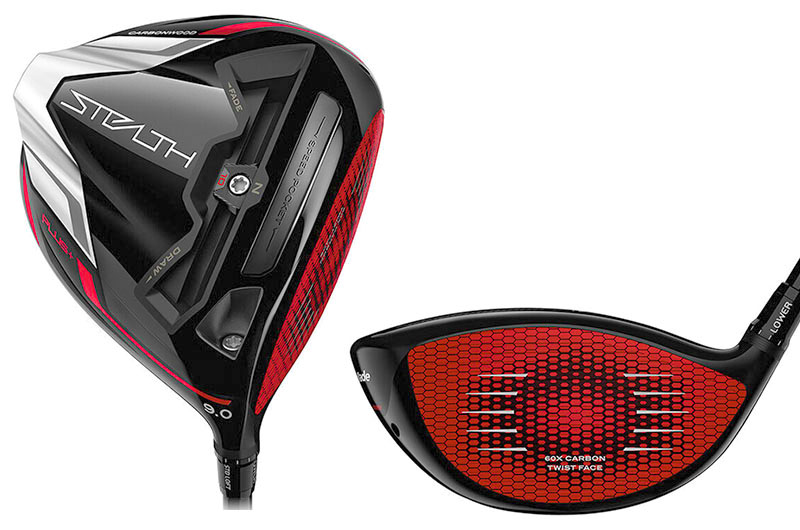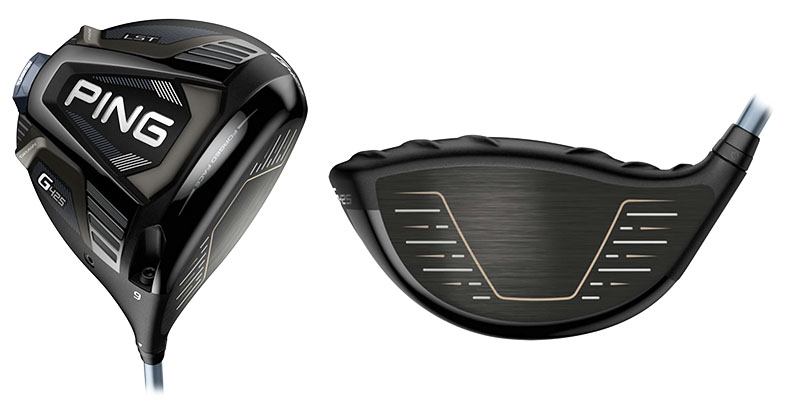By Coach Erik Schjolberg – Jan 9, 2024
Contents
Key Takeaways – Rogue ST Triple Diamond LS Driver
- Triple Diamond is Callaway’s lowest lofted, lowest spin, and lowest launch option
- This is a player’s driver meant for single digit handicaps and lower
- Compact head shape coming in at 10cc smaller than typical drivers
- This club demands consistent swings to perform
- Tungsten speed cartridge, jailbreak speed frame, and a forward weight launch the ball far down the fairway
- The SS22 Flash Face boasts a smaller sweet spot but incredible speeds
Introducing “The good part”, part two! Callaway did something novel here by releasing what was previously a tour-edition head that sometimes would appear late in the season for consumers.
Golf junkies that scour forums and pay close attention to tour gear are familiar with Callaway’s Diamond system.
For those that are new to it, the “Triple Diamond” series of drivers are typically lower lofted, lowest spin, and lowest launch by nature… they’re pro sticks for a reason.
This one does an excellent job… if you can handle it.
Callaway Rogue ST Triple Diamond LS Driver Review




Lofts Available: 9.5°, 10.5°
Pros:
- Low spin and low launch are a recipe for distance
- Incredible feel and stability on sweet-spot strikes
- Ball speed is absurd for well-struck shots. Wind should not be an issue
- Compact head shape and size will appeal to everyone, but especially players looking for a more traditional club
Cons:
- Price. $550 is a lot to pay for a new stock driver
- Forgiveness is on par with a tour-level driver
- This is not for the faint of heart and can be taxing physically
- Swing speed is essential since the spin and launch are both inherently low
Lofts Available
9⁰, 10.5⁰
Handicap Range
Scratch – 7. This is a player’s driver, no question.
Technical Review
The Rogue ST Triple Diamond LS is designed for players with the least forgiveness available in the Callaway line, a symmetrical face at address, and more weight pushed far forwards towards the face of the driver instead of low and at the back of the frame. This is not a high MOI design and has the least heel/toe relief of its class.
Callaway’s excellent speed cartridge, SS22 flash face, and jailbreak technology are still present in the head, but all tuned to pushing the ball as far down the fairway as possible. The sweet spot of this driver is small but incredibly effective.
Coming in at 450cc, the head has a noticeably compact player’s shape with a visible weight port located squarely between the jailbreak system. Callaway uses a 20g speed cartridge at the back of the driver instead of the MAX’s 26g.
The impact of this design produces a hotter ball off the face of the driver when struck in the sweet spot, combined with significantly lower spin and launch compared to the MAX. The driver, by design, has a slight fade bias to help players find that saucy cut-shot.
Shaft options are consistent with the rest of the ST line but for those of you serious about playing this driver, there are a multitude of custom options that may better suit your swing and goals. Unfortunately, these premium options come at an up charge.
Performance
There’s some good news, some bad (neutral?) news, and a surprise. I’ll start with the negative, which really isn’t negative at all.
I tested this club out with the low spin, high torque, low launch shaft that I normally play to be able to give it a proper comparative review. With that pairing, it was a challenge to produce consistent results.
I’ll freely admit that the TD is not a match for my swing and plays to the upper range of my ability. The highs are incredible and make you feel like you should play on the tour. The lows would cost me strokes on course which effectively takes this club out of my bag. With that disclaimer, let’s move on to the good stuff!
Playing this driver demanded that I swing confidently and freely without reservations. When I hit the Triple Diamond LS well, it was dangerously addictive. The ball is blisteringly fast off the face and rips through the air even in wind. We’re talking consistent 285+ yards of carry and another 30-40 yards of roll-out.
The potential to hit bombs is absolutely phenomenal. You’ll find yourself addicted to the good ones and ignoring the multitude of lesser shots while chasing after more distance. I attribute this to the combination of the jailbreak frame, the tungsten speed cartridge, and the more compact head supported with the forward weight port.
The Rogue ST Triple Diamond LS Driver feels like an absolute hammer off the tee, and I found myself reaching for higher-compression balls because the club plainly screams for distance.
However, all this comes with a caveat. The ability to max out this driver assumes that you’re able to get a launch angle from 13-15⁰ and find the sweet spot.
I found that the majority of my shots sat in the 9-11⁰ range which produced carries of about 260y and an additional roll-out of 30-40 yards. The ball still touched the 300y mark, but in a very bumpy manner.
Backspin production is consistent with the launch findings. I was hard pressed to push this club over 2,500 rpm and instead found my shots sitting in the 1,650-1,900 range which validates the effectiveness of the design.
So, we covered the good, and the neutral. What’s the surprise?
On two separate occasions, I had the opportunity to play with visiting professional athletes—one a baseball player and one a hockey player. Lo and behold, they both had a custom-fit Rogue ST Triple Diamond LS driver with Fujikura Ventus Black (velocore) shafts.
For those of you that don’t geek out over gear, these sticks are basically the Ferrari of drivers and cost in excess of $1,000 with fitting and premiums tallied.
Naturally, both baseball and hockey lend themselves to very high swing speeds. Of course, I had to bother the gents to swap drivers and play a second ball on a few par-5s… you know… for the readers… It didn’t work out well for me.
When I say the results were shocking, I’m not exaggerating. These gentlemen consistently were able to carry the ball over 300 yards with their respective setups, yet struggled when hitting the ST MAX I was testing out at the time.
While they still hit the ball solid, their balls would balloon up in the air, or catch a shot shape that limited their distance and control comparatively.
For one of the outings, I used one of the custom Rogue ST Triple Diamond LS driver early in the round and *proudly* hit a 311y draw directly to the center of a dog-leg-left fairway with no elevation assistance. It may have rolled a good portion of the way, but in good spirit of competition I told my playing partner, “good luck matching that”.
I lost…badly. The guy hit a 349y drive on the same line, through the fairway, on a fly, and onto another hole. There was no wind. *Mind blown*. He proceeded to bomb a couple more shots that jumped past the 330y mark throughout the rest of the day to prove a point.
In sum, this driver can absolutely handle anything you throw at it.
While a fun story and experience, this isn’t the reality for the majority of players and consumers that will try to play the Rogue ST Triple Diamond LS Driver. However, it does show just how effective the technology in the club can be with the right user.
Looks
The TD LS shares the same design characteristics as the rest of the Rogue ST family, and I love the matte carbon fiber fade adorned by the gold striping at the back. Where it differs is in the more compact head shape and symmetrical face.
It’s hard to look at the club and not like what you see at address, especially since the aesthetics are so clean. For those that want to brave the TD, the club is large enough that it doesn’t appear intimidating. If you put it side-by-side with the MAX LS, you’ll notice that it’s a bit shorter from front to back.
Sound and Feel
The TD shares a sound signature with the MAX LS and registers on the lower side of “quiet” when you strike a ball out of the sweet spot.
From a feel perspective, the TD has the most feedback out of the ST line of drivers. You’ll definitely know whether you hit a ball out the toe, heel, high or low if you’re paying attention. While sometimes jarring, this is definitely helpful to calibrate your contact point at the range, or make small adjustments on course.
Pros
- Incredible feel and stability on sweet-spot strikes
- Ball speed is absurd for well-struck shots. Wind should not be an issue
- Low spin and low launch are a recipe for distance
- Compact head shape and size will appeal to everyone, but especially players looking for a more traditional club
Cons
- Price. $550 is a lot to pay for a new stock driver
- Forgiveness is on par with a tour-level driver
- This is not for the faint of heart and can be taxing physically
- Swing speed is essential since the spin and launch are both inherently low
The Bottom Line
The Triple Diamond LS Driver is a tour-level driver that will tempt a lot of players with its sleek looks and high-end performance.
In the right hands though, this will absolutely be a WEAPON for players that are looking to push distance down the fairway and playing courses that exceed the 7,000y mark.




Lofts Available: 9.5°, 10.5°
Pros:
- Incredible feel and stability on sweet-spot strikes
- Ball speed is absurd for well-struck shots. Wind should not be an issue
- Low spin and low launch are a recipe for distance
- Compact head shape and size will appeal to everyone, but especially players looking for a more traditional club
Cons:
- Price. $550 is a lot to pay for a new stock driver
- Forgiveness is on par with a tour-level driver
- This is not for the faint of heart and can be taxing physically
- Swing speed is essential since the spin and launch are both inherently low
Alternate Choices to the Callaway Triple Diamond Driver
Titleist TSi4
Honestly, the closest club to the Triple diamond from other brands is the Titleist TSi4. Because Titleist and Callaway decided to release 4 drivers compared to only 3 from most of the other big name brands, they are essentially able to make two “low spin” options – one that is “sort of low spin” that’s aimed at low handicap or scratch golfers, and a “super low spin” option that is geared toward below scratch and pro level players.
TaylorMade Stealth Plus


The Stealth Plus is TaylorMade’s version of a low spin driver. It’s going to fall somewhere between the Rogue Triple Diamond LS and the Max LS in my opinion. But each driver has it’s own pros/cons… read our full review of the TaylorMade Stealth Plus Driver.
Ping G425 LST


Ping has their low spin option as well, the G425 LST. Like the Stealth Plus though, the LST is going to be between the Triple Diamond LS and the Mas LS in my opinion. Check out our full review of the Ping G425 LST Driver.
Best Drivers 2024


We do have our list of the absolute 5 best drivers of 2024 in our opinion. Check that out if you’re not quite ready to pull the trigger on the Triple Diamond LS.
Other Drivers in the Rogue ST Family:
There are 3 other drivers in the Callaway Rogue ST driver family…
- The Callaway Rogue ST Max Driver – for high to mid handicap golfers
- The Callaway Rogue ST Max LS Driver – for low handicappers who aren’t quite ready for the triple diamond
- The Callaway Rogue ST Max D Driver – for golfers struggling with a slice or wanting to play a draw
FAQ
Note – Some of these FAQs were covered throughout the article, but I still get these questions a lot… so here are the “short and sweet” answers to the most common questions:
What does Triple Diamond mean on Callaway drivers?
The Triple Diamond designation on the Callaway drivers means that it is a “tour” or “pro” level driver. That doesn’t mean you HAVE to be quite on that level, but you better be able to break 80 consistently if you think you can handle this one.
More specifically, the Triple Diamond LS designation means that there is lower loft, lower launch, and lower spin inherently built into the driver head. So much much less forgiveness and a smaller sweet spot… BUT much faster ball speeds on well center struck shots.
Do any pros use Callaway Rogue?
Yes, many pro golfers are using the Callaway Rogue Driver… most using the Rogue Triple Diamond LS Driver to be more specific. The list includes:
PGA Tour:
Rogue ST Triple Diamond LS: Jon Rahm, Xander Schauffele, Sam Burns, Marc Leishman, Kevin Na, Si Woo Kim, Francesco Molinari, Ryan Moore, Adam Hadwin, Brandon Grace, Dylan Fritelli, Emiliano Grillo, Brian Stuard, Wesley Bryan, Chase Seiffert, Kelly Kraft, Jonathan Byrd, Adam Svensson, Danny Lee, Min Woo Lee
Rogue ST Max LS: Danny Willet, Erik Van Rooyen, Henrik Stenson, Alex Noren
LPGA Tour:
Rogue ST Triple Diamond LS: Madelene Sagstrom, Yuka Saso, Jeong Eun Lee6, Sandra Gal, Emma Talley
Rogue ST Max LS: Annika Sorenstam, Anne Van Dam, Laura Davies
Champions Tour:
Rogue ST Triple Diamond LS: Rich Beem, Stuart Appleby, David Duval, Olin Browne
Rogue ST Max LS: Retief Goosen




Lofts Available: 9.5°, 10.5°
Pros:
- Incredible feel and stability on sweet-spot strikes
- Ball speed is absurd for well-struck shots. Wind should not be an issue
- Low spin and low launch are a recipe for distance
- Compact head shape and size will appeal to everyone, but especially players looking for a more traditional club
Cons:
- Price. $550 is a lot to pay for a new stock driver
- Forgiveness is on par with a tour-level driver
- This is not for the faint of heart and can be taxing physically
- Swing speed is essential since the spin and launch are both inherently low

